The main challenge of sports photography is that you are photographing fast-moving subjects. Attempting to shoot a sports event with an all-purpose lens will not work for most cases, you need a fast lens for your sports photography otherwise you will get photos with motion blur. In this article, I’ll provide you with a list that contains the best Canon lens for sports photography.
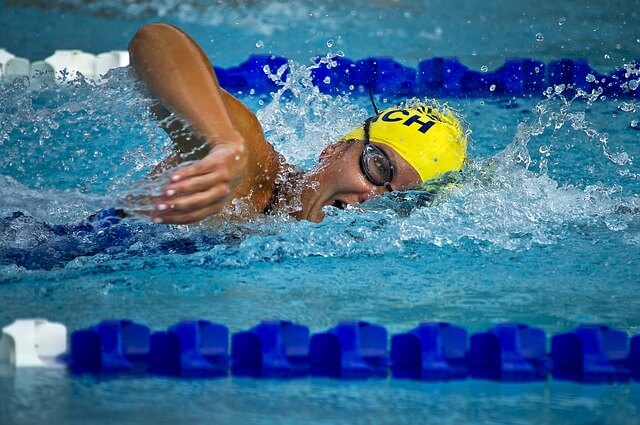
There are some features you should consider when choosing a lens for sports photography, they are:
Fast lens:
A fast DSLR lens is one that has a low aperture f-number (Lenses with wider apertures) it allows you to freeze the action. For example, a lens with a max aperture of f/2.8 is faster than the one with f/4-5.6. The downside is that faster lenses are more expensive. Unfortunately, if you’re serious about capturing great sports shots, then there is no getting around this.
Fast autofocus:
A fast lens motor is also important so that the lens can autofocus quickly. For example, Canon offers a range of ring USM lenses that automatically focuses quicker than non-USM. For those with Nikon SLR cameras, it’s good to look for a lens that offers a Silent Wave Motor (SWM). Fast autofocusing is the main advantage of silent wave motors.
Focal length
The focal length will depend on how close you can get to your subject (i.e. the type of sport you are shooting) as well as how much cropping you can get with your body. Because a cropped sensor is smaller than a full-frame sensor, full-frame lenses attached to a cropped camera will give the lens a field of view like a longer lens. For example, a cropped camera with a crop factor of 1.6 will give a full-frame 300mm lens a field of view of a 450mm lens.
Obviously, you will need a longer telephoto lens if you’re going to shoot a football game when compared to a roller hockey event. If you find you need extra distance coverage, you can always use a teleconverter as well. Therefore it’s important to purchase a telephoto lens that is compatible with teleconverters, so you do have that option later on down the track.
While your telephoto might be the obvious choice for covering the game itself, your wide-angle lens will be a lifesaver when shooting interviews before or after the main event.
Image stabilization (IS & VR)
Image stabilization and vibration reduction are useful but keep in mind that the system prevents camera shake at slower shutter speeds, and obviously slower shutter speeds are not our concern in sports photography. However, IS/VR is very good for low-light situations (indoor sports photography). So if you are planning on using your lenses for more than sports, you may wish to consider getting a lens with IS.
Zooms
In most scenarios, you’re going to need a zoom lens to cover the action in your frame most efficiently. With that said, you’ll want to avoid buying a zoom lens that only covers a standard range, such as a 24-105. Instead, opt for a longer zoom like a 70-200. Doing so will ensure that you have enough range to capture the dynamic changes in what you’re shooting.

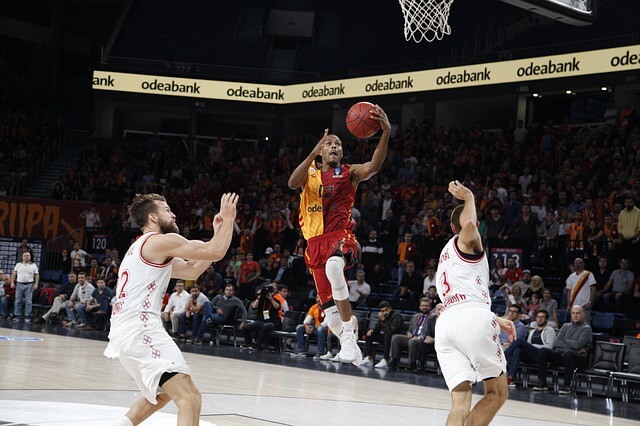
Indoor Sports Photography
An indoor sports lens needs to have a very wide aperture to enable a shutter speed fast enough to adequately stop the action. And yes, “adequate” in these situations often involves a compromise.
A fixed focal length (or prime) lens is often a good choice as these lenses typically get the widest apertures. Of course, the disadvantage of the fixed focal length lens is that you can’t properly frame the fast-moving athlete as they go from near to far or far to near. The results from a prime lens in this scenario often require resolution-destructive cropping when the subject is too far away – or creative framing when the subject is too close. With a prime lens, you need to select the lens and position your camera so that it works best for the particular situation – or carry a couple of cameras with different focal length lenses mounted.
On the other hand, the other alternative is the zoom lens. The biggest problem with zoom lenses is that they seldom feature a max aperture wider than f/2.8. And f/2.8 is usually what I consider the absolute minimum aperture opening for a successful indoor sports shoot.
In dimly lit areas, even a max aperture of f/2.8 may require the use of ISO settings so high that an unacceptable amount of noise in your images is the result, especially with an APS-C DSLR camera.

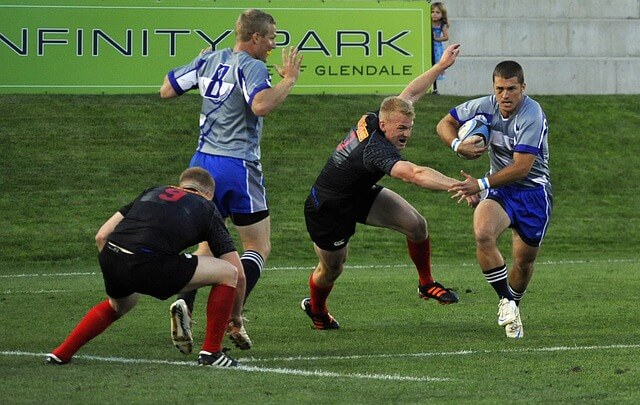
Outdoor Sports Photography
A wide aperture is usually the key to get fast shutter speeds like 1/500, 1/1000 or higher to freeze the action. Outdoor sports are often played in bright daylight conditions where even f/5.6 max aperture lenses will work fine, but fast/wide aperture lenses are still a big advantage. Wide apertures can blur the especially distracting sports venue backgrounds and can yield the fastest shutter speed/lowest ISO setting combinations.
Getting the right focal length is, as usual, very important for selecting a sports lens. Many outdoor sports participants cover a wide range of distances from the photographer’s position. Professional sports photographers shooting big events will usually use at least three camera setups simultaneously – to make sure that they have the right focal length available all the time.
If you are shooting large field sports (soccer, baseball, American football), you are probably going to want a full frame 400-600mm focal length angle of view. If you are shooting track and field, with full access to the venue, any focal length from 24mm through 400mm or even 600mm can be useful. If shooting from outside of the fence or from the bleachers, you probably need 200mm – 400mm depending on your subject distance.
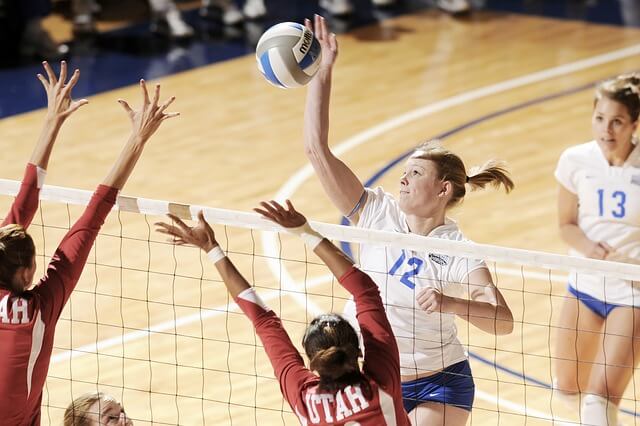
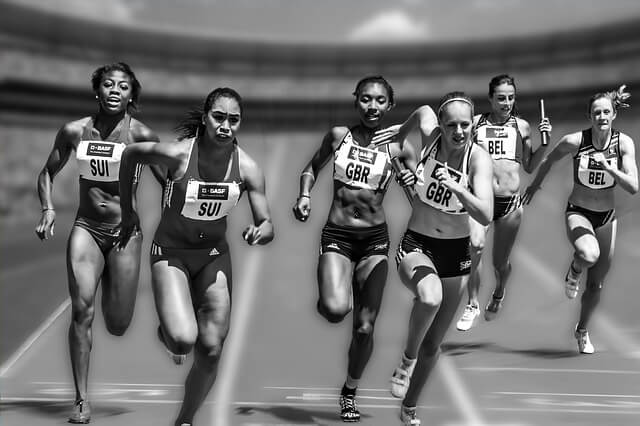
My Lenses recommendation for indoor & outdoor sport photography
-
Canon Prime Lenses
Canon EF 200mm f/2L IS USM Lens
An exceptionally fast medium telephoto prime, the EF 200mm f/2L IS USM is a Canon L-series lens that is ideal for portraiture as well as indoor sports shooting or other low-light, fast-motion applications. The large f/2 maximum aperture benefits working in difficult lighting and also afford extensive control over depth of field for isolating subject matter using selective focus. Equally impressive, the optical design incorporates ultra-low dispersion glass and fluorite elements to significantly reduce color fringing and chromatic aberrations for high clarity. Additionally, Super Spectra coatings have been applied to suppress lens flare and ghosting for high contrast and color neutrality when working in harsh lighting.
Canon EF 300mm f/2.8L IS II USM Lens
Versatile due to its mid-telephoto focal length and bright maximum aperture, the Canon EF 300mm f/2.8L IS II USM is also distinguished by its high-speed performance and intuitive handling to suit its use in a wide variety of working conditions. As an L-series lens, this Tele prime, of course, features an advanced optical design; two fluorite elements are used to reduce color fringing and chromatic aberrations for high clarity and color accuracy and a Sub Wavelength Coating has been applied to individual elements to suppress flare and ghosting for increased contrast and color neutrality when working in backlit conditions. The fast f/2.8 maximum aperture also enables extensive control over the depth of field for isolating subjects using selective focus, and it also benefits working in difficult lighting conditions.
Canon EF 400mm f/2.8L IS II USM Lens
Pairing a favored super-telephoto focal length with a bright f/2.8 maximum aperture, the EF 400mm f/2.8L IS II USM is a Canon L-series optic well-suited for outdoor, wildlife, and sports applications. The fast maximum aperture enables extensive control over depth of field for isolating subjects using selective focus, and it also benefits working in difficult lighting conditions. Two fluorite elements are used in the optical design to help reduce color fringing and chromatic aberrations for high clarity and color accuracy and a Sub Wavelength Coating has been applied to individual elements to suppress flare and ghosting for increased contrast and color neutrality when working in backlit conditions.
Canon EF 600mm f/4L IS III USM Lens
Mixing length and capability, the EF 600mm f/4L IS II USM is a Canon L-series super-telephoto lens distinguished by its advanced design, quick and intuitive handling, and high speed to suit sports and wildlife applications. Using a pair of fluorite elements, along with four aspherical elements, both chromatic and spherical aberrations are kept to a minimum in order to realize sharp, clear image quality with accurate rendering and color fidelity. SubWavelength Coating also contributes to color accuracy and helps to control flare and ghosting when working in backlit and harsh lighting conditions.
Canon EF 500mm f/4L IS II USM Lens
Well-suited for sports and wildlife photography, the EF 500mm f/4L IS II USM is a Canon L-series super telephoto lens that blends long reach with fast performance and intuitive handling. Using a pair of fluorite elements, along with four aspherical elements, both chromatic and spherical aberrations are kept to a minimum to realize sharp, clear image quality with accurate rendering and color fidelity. A SubWavelength Coating also contributes to color accuracy and helps to control flare and ghosting when working in backlit and harsh lighting conditions.
Sigma 135mm f/1.8 DG HSM Art Lens
A fast telephoto prime, the Canon EF-mount 135mm f/1.8 DG HSM from Sigma pairs bright and sophisticated optics with intuitive handling and design. As part of the Art line of lenses, this 135mm f/1.8 is designed for high-resolution rendering and utilizes FLD and SLD glass to control chromatic aberrations and color fringing for notable clarity. A Super Multi-Layer Coating also enhances image quality by suppressing lens flare and ghosting for improved contrast and color fidelity in strong lighting conditions. Additionally, making it an ideal lens for portraiture, the bright f/1.8 maximum aperture pairs with a rounded nine-blade diaphragm to benefit selective focus and shallow depth of field imaging with smooth bokeh.
The fastest 135mm telephoto lens in its class. Ideal for indoor sports and portraits with background blur. Two UD-glass elements correct the secondary spectrum for outstanding sharpness and color. Compatible with Extender EF 1.4x II and 2x II. The Canon 135mm F/2L is commonly used for Landscape/scenery, Low light, Macro photography, Night photography, Photojournalism, Portraits, Sports/action, Video, Weddings, Wildlife, Wildlife photos, and more. The Canon 135mm F/2L is popular because customers like the following qualities of the Canon 135mm F/2L: Consistent output, Durable, Easily interchangeable, Easily mounted, Fast/accurate auto-focus, Fast auto-focus, Lightweight, Nice bokeh, Rugged, Simple controls, Strong construction, Superior build quality, and Super-sharp images.
Canon EF 200mm f/2.8L II USM Lens
A medium telephoto L-series prime, the Canon EF 200mm f/2.8L II USM combines a flexible focal length with a modestly bright maximum aperture to realize a relatively compact and lightweight design well-suited for sports and portraiture applications. Its advanced optical design incorporates a pair of ultra-low dispersion glass elements to greatly reduce color fringing and chromatic aberrations to realize notable clarity and color accuracy, and a Super Spectra coating also helps to increase contrast when working in harsh lighting conditions. Benefitting the optics, a ring-type USM is employed, too, to deliver quick and quiet autofocus performance along with full-time manual focus control.
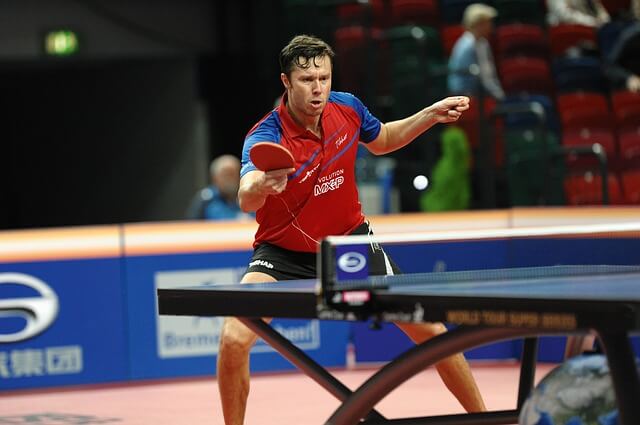
-
Canon Zoom Lenses
Canon EF 70-200mm f/2.8L IS II USM Lens
A workhorse of a lens, the Canon EF 70-200mm f/2.8L IS II USM is an L-series telephoto zoom characterized by its bright f/2.8 constant maximum aperture and optical image stabilization. The fast maximum aperture affords greater control over depth of field and benefits working in low-light conditions while the Image Stabilizer compensates for four stops of camera shake for sharper handheld shooting. As an L-series lens, this 70-200mm also features a sophisticated optical design that uses five ultra-low dispersion elements and one fluorite element to reduce color fringing and chromatic aberrations for improved clarity. Also, a Super Spectra coating has been applied to help reduce lens flare and ghosting for greater contrast and color neutrality.
Sigma 120-300mm f/2.8 DG OS HSM “Sports” Lens
The Sigma 120-300mm f/2.8 DG OS HSM Lens for Canon is a telephoto zoom lens featuring a fast, constant f/2.8 maximum aperture. This lens is the first lens designed under Sigma’s new Sports line of lenses, making it well-suited for fast-moving subjects such as wildlife, nature, aviation, racing, and other similar situations.
Tamron 70-200mm f/2.8 Di VC USD G2 Lens
A popular telephoto zoom for a variety of shooting applications, this Canon EF-mount SP 70-200mm f/2.8 Di VC USD G2 Lens from Tamron is characterized by its bright f/2.8 constant maximum aperture, as well as sophisticated optical and physical designs. Regarding optics, an improved layout contains one XLD element and five LD elements to suppress color fringing and chromatic aberrations for notable clarity and color accuracy, and both BBAR and eBAND coatings have been applied to reduce flare and ghosting.
Canon EF 70-200mm f/2.8L USM Lens
A workhorse of a lens, the Canon EF 70-200mm f/2.8L IS II USM is an L-series telephoto zoom characterized by its bright f/2.8 constant maximum aperture and optical image stabilization. The fast maximum aperture affords greater control over depth of field and benefits working in low-light conditions while the Image Stabilizer compensates for four stops of camera shake for sharper handheld shooting. As an L-series lens, this 70-200mm also features a sophisticated optical design that uses five ultra-low dispersion elements and one fluorite element to reduce color fringing and chromatic aberrations for improved clarity. Also, a Super Spectra coating has been applied to help reduce lens flare and ghosting for greater contrast and color neutrality.
Sigma 50-100mm f/1.8 DC HSM Art Lens
Pairing a versatile range of telephoto focal lengths with a fast constant maximum aperture, this 50-100mm f/1.8 DC HSM Art Lens from Sigma is designed for APS-C-format Canon EF-mount DSLRs and provides an 80-160mm equivalent focal length range. The bright constant maximum aperture offers consistent low-light performance throughout the zoom range and also affords greater control over focus placement for shallow depth of field and selective focus applications. Complementing the versatile telephoto range is a sophisticated optical design that incorporates three F Low Dispersion elements, one Special Low Dispersion element, and one high-refractive-index, high-dispersion glass element. This combination of low dispersion designs works to noticeably reduce chromatic aberrations and color fringing throughout the zoom range, as well as deliver a high degree of contrast and clarity. Additionally, a Super Multi-Layer Coating has been applied to lens elements to reduce lens flare and ghosting to benefit working in strong lighting conditions. An unprecedented combination of focal length and speed, this 50-100mm f/1.8 lens offers a variety of favored telephoto perspectives in combination with a flexible maximum aperture.
Canon EF 100-400mm f/4.5-5.6L IS II USM Lens
A long-reaching telephoto zoom characterized by a sophisticated optical design and advanced image stabilization technologies, the Canon EF 100-400mm f/4.5-5.6L IS II USM Lens is part of the esteemed L-series developed for full-frame EOS DSLRs. One fluorite element and one Super UD element have been incorporated into the lens construction, and both help to reduce aberrations and distortions throughout the zoom range to deliver notable clarity, image sharpness, and faithful color reproduction. An Air Sphere Coating has also been applied to lens elements to reduce lens flare and ghosting for more contrast-rich imagery. Benefitting the optical components of the lens, a four-stop effective Image Stabilizer helps to minimize the appearance of camera shake and can be dedicated to different styles of shooting. Furthermore, a redeveloped rotation-type zoom ring pairs with an internal focusing mechanism, and an Ultrasonic Motor, to deliver quick and intuitive handling to benefit handheld shoot. Positioned as a versatile option for sports and wildlife photographers, this lens’ list of attributes make it a viable telephoto zoom for a variety of shooting applications.
Related Posts
Best Canon Camera for Sports Photography
Basketball Photography Tips – Indoor Sports Photography Guide
Thanks for reading, I hope you enjoyed the article if you have any questions just post them below & I will be happy to answer you.
If you enjoy the site, don’t forget to subscribe, we will only inform you when a new article is posted.





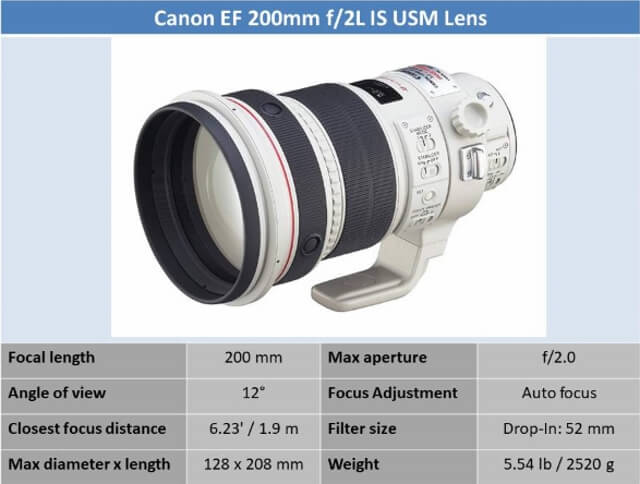
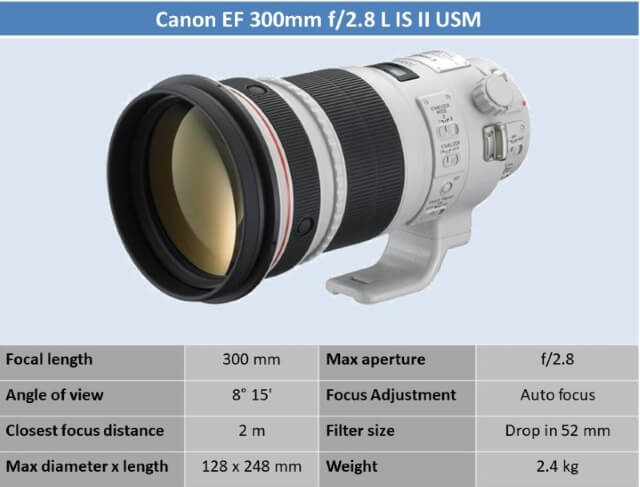
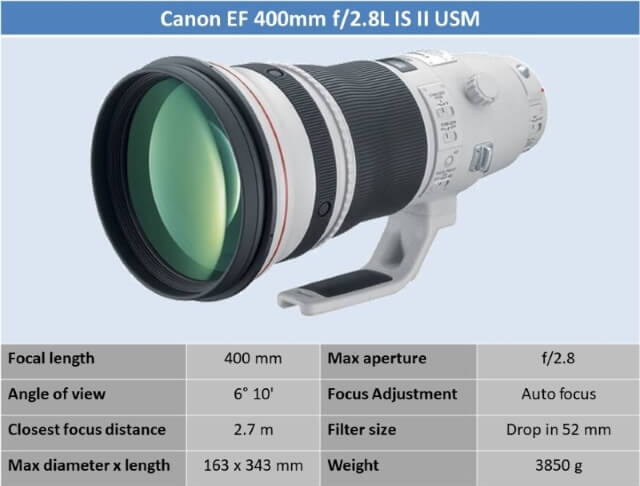

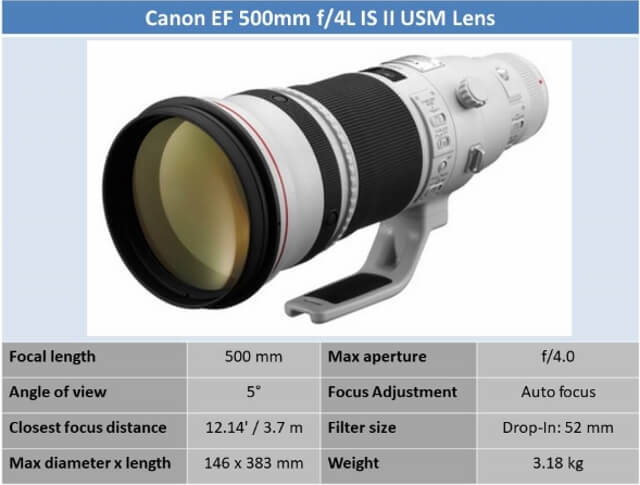
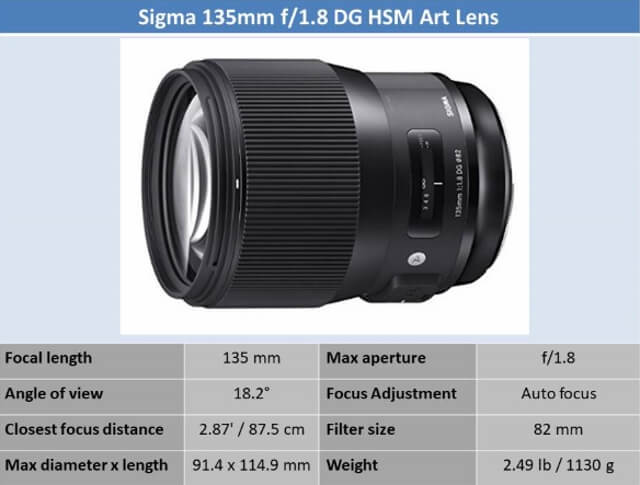
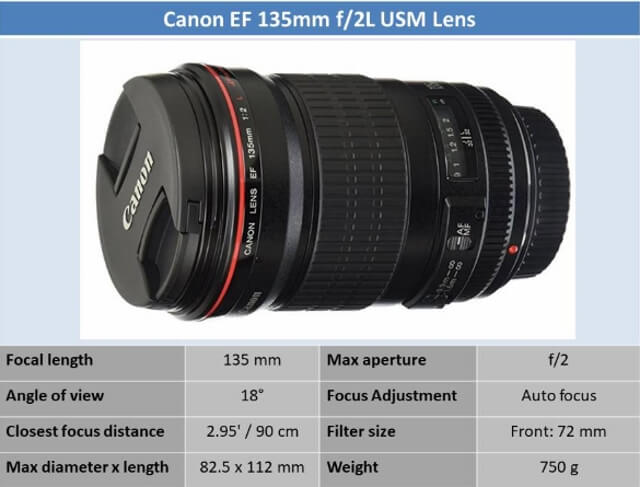
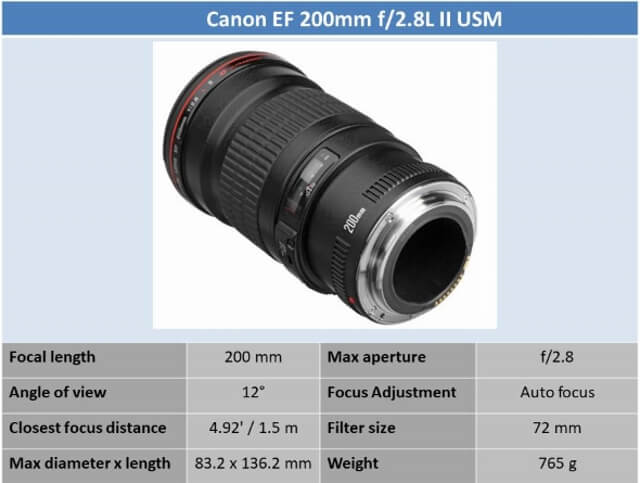
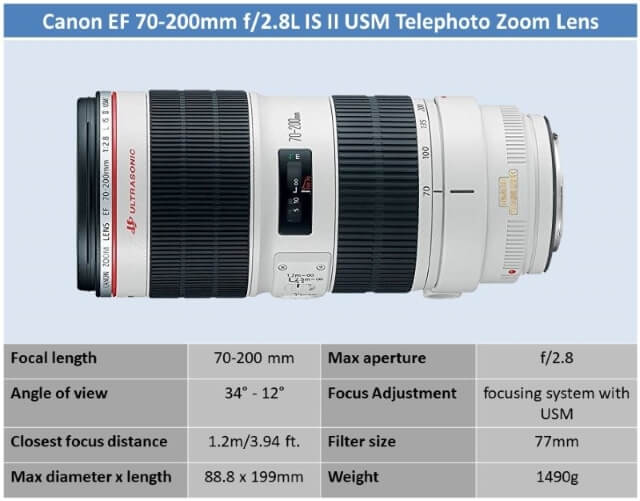
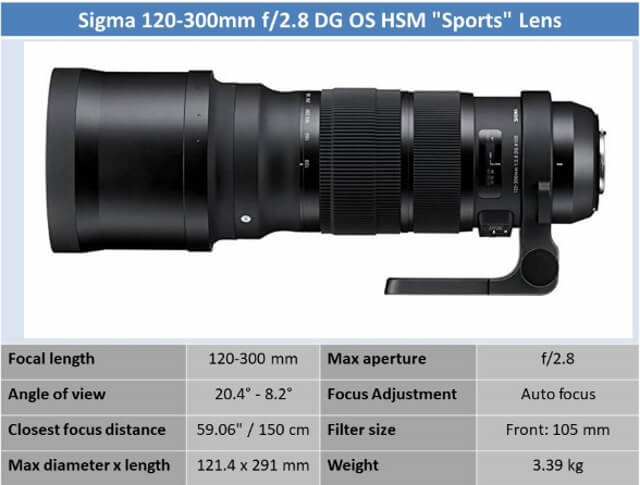
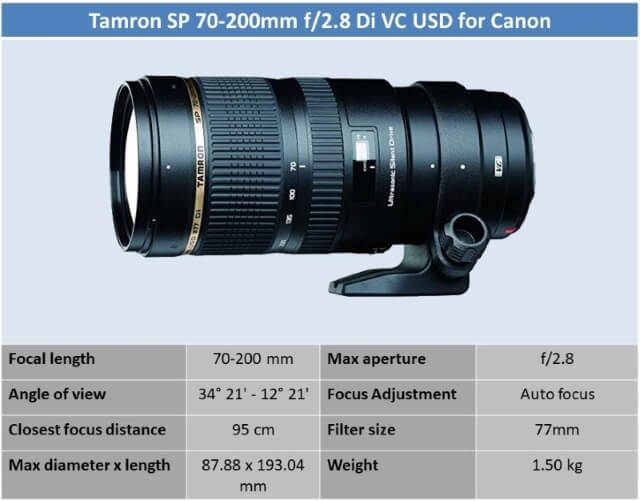
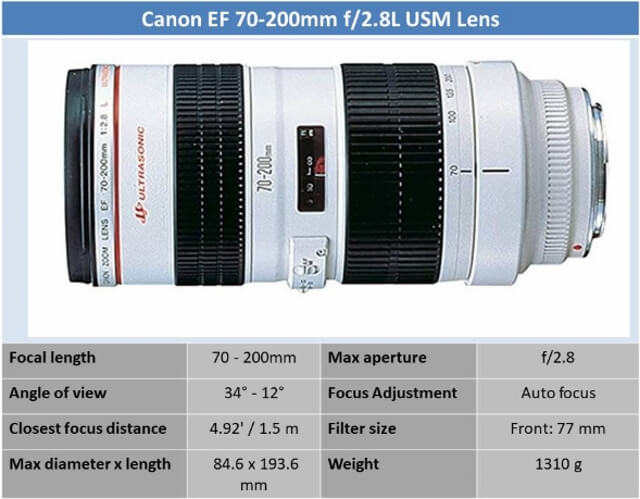
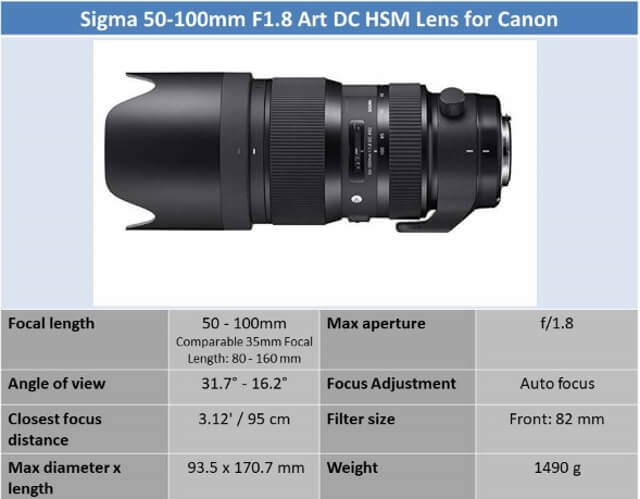
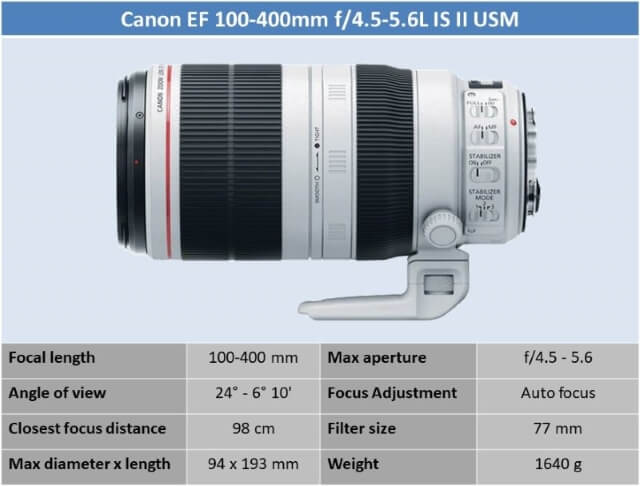





Hi Amin. Read your article and very informative. My question centres on 3 lenses for indoor sporting and non sporting events. Thus AF is critical. The Canon 35mm f1.4 ii vs the canon f2 IS vs the canon 24-70mm f2.8 ii….I prefer primes but not sure here..please give me your opinion
Hi Michael
Thanks for your comment, as for your question: The Canon EF 35mm f/1.4L has less Vignetting, less Chr. Aberration, less Distortion, and it is slightly sharper; also, it has better AF performance in low light situations. For moving subjects, the one-stop advantage (f1.4 vs f2) is a plus. In addition, the built of the L version is much better but it’s larger and heavier and it will cost you 4 times when compared with Canon Ef 35mm f/2 IS. If you can afford it, it is a good choice!
You can check the lenses comparisons on DOX Mark
Yes I enjoyed the article is was very educative, I knew very little about photography, reading this article has given me more knowledge about it, from the indoor and out door sports photography and the recommended lenses I would say I learnt a lot. Zooming in photography is an important aspect too. Thanks for this article.
Glad that you enjoy the article and find it useful to you. To know more about cameras that are used in sports photography, you may check my post “Best Canon camera for sports photography“, “How to shoot sports photography-Tips and gear recommendations“
Wow some nice pgotography here on your website. My daughter was thinking about taking up acting, I mentioning this as she needs headshots taken to add to here portfolio. These cameras seem like they could take a pretty proffessional photo graph. At moment we only been using our phones for photos that look ok, but hardly the proffessional standard we looking for. You had any experience in this area?. Would seem it be pretty closely related due to the quality of photos achieved.
Thanks for your comment, smartphone cameras are very useful for ordinary and everyday shots, but when it comes to professional portrait photos you surely need a decent camera and a good lens.
Hi Amin,
Your article is very timely for me but also a bit of a shock to the system. I use a Canon EOS 1100D for casual picture taking and I have just started to look into buying a zoom lens. I was originally thinking about a faster lens but, now that I see the comparative cost to a standard lens, I may have to reconsider. Do you have some advice on a good lens in the 70 – 200mm range?
Wishing you every success with your photography,
Gary
Thanks for your comment, Of course, a fast lens is expensive but it is needed when shooting fast action such as sports photography. My answer to your question is that I suggest Canon EF-S 55-250mm f/4-5.6 IS STM telephoto zoom lens. It is reasonably sharp over the entire range and I guess it is affordable. You may check my review for this lens HERE.